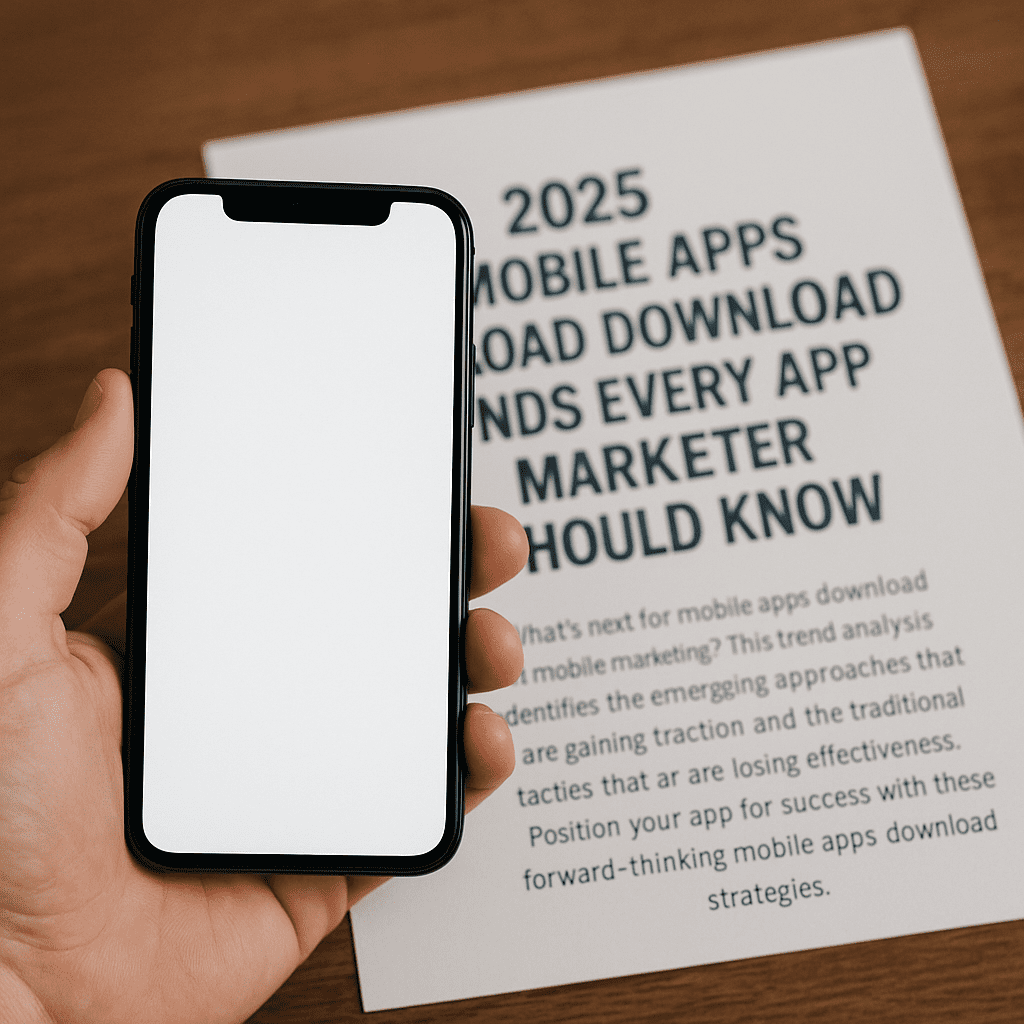
2025 Mobile App Download Trends Every Growth Leader Must Know
The mobile ecosystem is at an inflection point. By 2025, global app downloads are set to exceed 300 billion and revenues will approach $1 trillion, underscoring the scale of opportunity—and competition—for app marketers. To capture attention and build sustainable user bases, growth teams must evolve beyond standard playbooks. This article, authored with insights from Admiral Media and Business of Apps, outlines the six core trends shaping download strategies, emerging tactics to watch, and obsolete approaches to retire.
Key Industry Statistics for 2025
- 300+ billion global downloads forecast for 2025, driven by affordable devices and expanding 5G coverage (Business of Apps).
- 3 million apps live in Google Play and 2.2 million in Apple App Store—intense competition for visibility (Business of Apps).
- $950 billion in app revenue expected in 2025, up from $850 billion in 2024, fueled by subscriptions, in-app purchases, and ad monetization (Business of Apps).
- 100 billion gaming downloads every year, followed by 30 billion social and productivity apps (Business of Apps).
- Emerging markets (India, Brazil, Indonesia) account for 45% of new downloads. India alone grew +150% year-over-year versus +5% in the US (Business of Apps).
Top 6 Trends Shaping Download Strategies in 2025
1. AI-Driven Personalization and Predictive Analytics
Artificial intelligence and machine learning are moving from experimental to foundational. Leading app brands use AI to tailor every user touchpoint—from acquisition ads to onboarding flows—and drive download efficiency. Predictive analytics models analyze in-app behavior, session length, and churn signals to forecast which cohorts are most likely to convert or abandon. Growth teams can then deploy targeted re-engagement campaigns before users drop off, reducing churn by up to 25%. For a deep dive into AI strategies, see Admiral Media’s resources on AI-driven personalization.
2. Advanced App Store Optimization (ASO) and Deep Localization
With over five million apps across major stores, ASO remains mission-critical. In 2025, savvy marketers bundle keyword clusters by thematic relevance, test icon and screenshot variations via multivariate A/B tools, and leverage dynamic app store pages for targeted audiences. Simultaneously, “localization 2.0” extends beyond language to UX patterns, cultural imagery, and regional payment options. Brands that invest in deep market research and in-market creative see up to 40% lift in install rates. Explore Admiral Media’s proven ASO frameworks for practical guidance.
3. Omnichannel and Contextual Campaigns
Users no longer live in silos of “mobile only” or “desktop only.” They expect cohesive experiences across push, email, web, social, and physical channels. High-performing teams orchestrate omnichannel journeys that begin with a targeted ad, continue with a personalized web landing, and culminate in an in-app reward. Contextual triggers—location, local weather, calendar events—add relevance and drive conversion spikes of 15–20%. Centralizing campaign data in a single platform ensures consistent messaging and real-time optimization. For benchmarks, review Admiral Media’s omnichannel case studies in our blog archive.
4. Immersive Experiences: 5G, AR/VR, and Rich Media
The widespread rollout of 5G networks unlocks low-latency, high-bandwidth creative formats. From full-screen interactive ads to AR-powered try-ons and VR showrooms, brands can now deliver experiential previews before the first download. Early adopters have seen install rates double when previewing app functionality in immersive demos. As device capabilities converge, embedding AR experiences directly in ad units will become mainstream. For technical guidelines, refer to Google’s latest 5G best practices.
5. In-App Marketing and User-Generated Content
Acquisition is just the first step—retention and advocacy drive long-term value. In-app marketing is evolving from static banners to dynamic, native placements that respect UX. Think interactive walkthroughs, rewarded video offers, and micro-surveys that guide feature discovery. Simultaneously, user-generated content (UGC) is a powerful acquisition lever: social proof from real users can increase lift by 25%. Encouraging ratings, reviews, and social shares within the app creates a self-sustaining referral channel, especially among Gen Z and Millennials.
6. Privacy-First Measurement and First-Party Data
Apple’s App Tracking Transparency (ATT) and evolving Android privacy controls are eroding third-party identifiers. App marketers must pivot to privacy-compliant approaches, relying on first-party data, contextual signals, and aggregated attribution models. Building transparent data-consent flows and communicating value exchange will preserve trust and conversion rates. According to Admiral Media’s privacy playbook, apps with clear consent paths see 30% higher opt-in rates and stronger long-term engagement. Learn more in our Privacy-First Marketing guide.
Emerging Tactics to Watch
- AI-Powered Creative Optimization: Automated ad copy and asset testing at scale to maximize click-through and install rates.
- Voice Search Optimization: Preparing for voice assistants by answering natural-language queries in app descriptions.
- Proximity and Geofenced Campaigns: Leveraging BLE beacons and 5G for hyperlocal push notifications tied to real-world locations.
Obsolete Tactics in 2025
- Generic Push Blasts: One-size-fits-all notifications no longer resonate—users expect hyper-relevance or they opt out.
- Paid Installs Only: Over-reliance on paid user acquisition drives up CAC; organic channels and partnerships must be rebalanced.
- Ignoring Regional Nuance: Failing to adapt to cultural and regulatory differences in emerging markets risks wasted spend and compliance issues.
Action Plan: Position Your App for Sustainable Growth
- Invest in AI-driven personalization and predictive analytics to tailor journeys from install to long-term retention.
- Prioritize ASO and deep localization to stand out in crowded stores—leverage keyword clusters and culturally aligned creative.
- Adopt a privacy-first mindset: build transparent consent flows and rely on first-party signals for attribution.
- Harness omnichannel and contextual marketing to engage users across devices and real-world touchpoints.
- Experiment with 5G-powered AR/VR formats to create memorable, interactive previews that drive installs.
- Foster user-generated content and social sharing to amplify word-of-mouth and trust.
- A results dashboard showcasing the impact of optimized mobile apps download mobile apps download strategies on user acquisition costs, retention rates, and overall ROI.
Conclusion
The mobile download landscape in 2025 demands agility, precision, and a user-centric mindset. Growth teams that integrate AI, embrace privacy, master ASO, and deliver personalized, omnichannel experiences will capture the largest share of the 300 billion downloads on the horizon. Stay data-driven, keep testing new formats, and leverage expert insights from Admiral Media to ensure your mobile strategy remains ahead of the curve.
